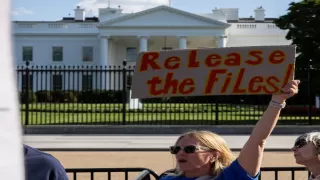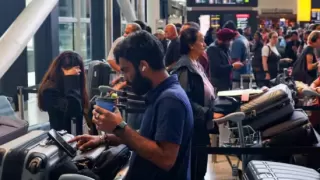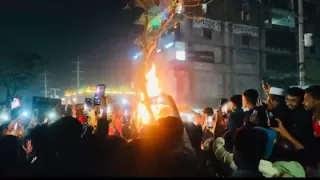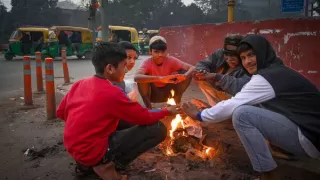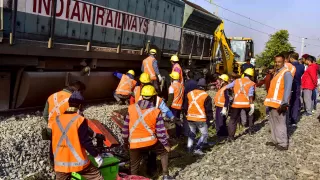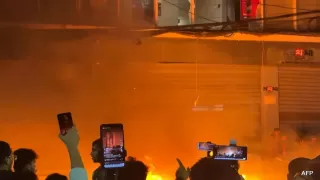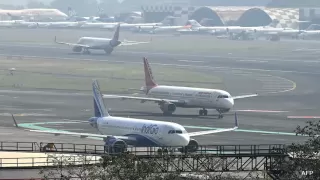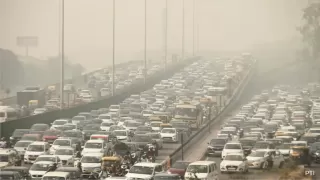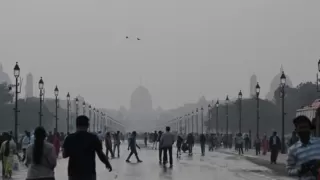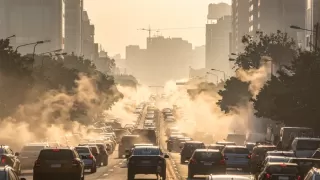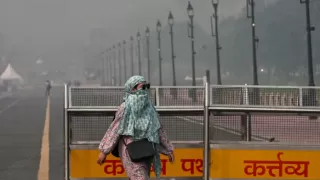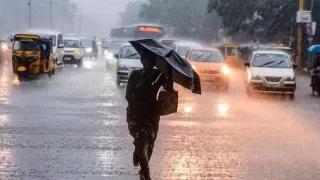Delhi is facing an unprecedented rise in air pollution, with the Air Quality Index (AQI) breaching the 400-mark for the first time this season. Residents woke up to a city shrouded in dense smog, with visibility dropping sharply and health advisories being issued for vulnerable groups. This sudden surge in pollution has triggered immediate government action, highlighting the urgent need to control emissions and protect public health.
The rise in pollution levels is attributed to multiple factors, including increased vehicle emissions, construction dust, industrial activity, and stagnant weather conditions that prevent the dispersion of pollutants. With the onset of winter and the common practice of crop residue burning in neighboring states, Delhi’s air has quickly transitioned from “very poor” to “severe,” affecting millions of residents, especially children, the elderly, and those with respiratory conditions.
Authorities have now implemented Stage III of the Graded Response Action Plan (GRAP), imposing stricter measures to curb pollution. This step reflects the seriousness of the situation, aiming to mitigate further deterioration and safeguard public health. Citizens are urged to follow safety guidelines, minimize outdoor activities, and stay updated on air quality alerts to reduce exposure to hazardous air.
Understanding the AQI Surge in Delhi
The AQI of Delhi crossed the 400-mark, categorizing it as “severe” for the first time this season. On Tuesday, 34 out of the city’s 39 monitoring stations recorded severe AQI levels, with Bawana at 462, Wazirpur at 460, and Mundka and Punjabi Bagh at 452. Such levels pose serious health risks, making it imperative for citizens to take precautionary measures. ([CPCB Sameer App](https://cpcb.nic.in))
An AQI of 0-50 is considered “satisfactory,” 51-100 is “moderate,” 101-200 is “poor,” 201-300 is “very poor,” and anything above 400 falls under the “severe” category. Delhi’s AQI leap from 362 to 425 within a day demonstrates how quickly pollution can escalate under adverse conditions. Experts attribute this surge to a combination of local emissions, weather patterns, and transboundary pollution from neighboring states.
What is GRAP-III and Why it Matters
The Graded Response Action Plan (GRAP) is a set of measures designed to tackle Delhi-NCR’s air pollution in a phased manner. Stage III, or GRAP-III, is implemented when AQI enters the “severe” category (401-450). At this stage, authorities impose strict curbs on activities that contribute to pollution to prevent further deterioration of air quality.
GRAP-III aims to reduce particulate matter in the air by targeting major sources such as vehicles, construction sites, and industrial emissions. By enforcing strict restrictions, the plan seeks to mitigate immediate health risks and protect the public from prolonged exposure to hazardous pollutants. It is a critical intervention during periods when natural and human-made factors combine to spike air pollution rapidly.
Key Restrictions Under GRAP-III
Under GRAP-III, non-essential construction and demolition activities are completely banned. This includes earth excavation, piling, laying sewer lines and electric cables through open trenches, and the operation of Ready-Mix Concrete (RMC) batching plants. Such activities contribute significantly to dust and particulate matter in the air, exacerbating the pollution crisis.
All private BS-III petrol and BS-IV diesel four-wheelers in Delhi, Gurugram, Faridabad, Ghaziabad, and Noida are prohibited from operating. Additionally, non-essential diesel-run BS-IV medium goods vehicles and BS-IV or lower diesel light commercial vehicles registered outside Delhi are also restricted, except for those transporting essential goods or providing essential services. These measures are designed to reduce vehicular emissions, which are a major contributor to Delhi’s air pollution.
Impact on Schools and Workplaces
To minimize public exposure, schools up to Class 5 have been advised to remain closed, with online classes being implemented. Private companies are also encouraged to adopt work-from-home or hybrid arrangements to reduce vehicle traffic and associated emissions. These measures aim to protect children and employees from high pollution exposure during peak AQI periods.
Public projects considered essential, such as railways, metro construction, airports, defense, sanitation, and healthcare, are exempt from the restrictions but must adhere to strict dust and waste management guidelines. This ensures that critical infrastructure projects continue without compromising public health, balancing developmental needs with environmental protection.
Health Advisory and Precautionary Measures
With AQI levels in the severe category, citizens are urged to limit outdoor activities, especially children, the elderly, and individuals with respiratory or cardiovascular conditions. Wearing masks, using air purifiers indoors, and avoiding strenuous outdoor work are recommended. Staying updated on daily air quality readings can help residents plan their activities and take necessary precautions.
Experts also recommend reducing emissions at an individual level, including minimizing vehicle use, avoiding burning waste, and supporting initiatives that aim to improve air quality. Collective action, coupled with government enforcement, can help manage pollution spikes more effectively and protect public health during critical periods.
Looking Ahead: Managing Delhi’s Air Pollution Crisis
The enforcement of GRAP-III highlights the urgent need for long-term strategies to combat air pollution in Delhi. Authorities and citizens must work together to reduce emissions from vehicles, industries, and construction sites. Urban planning, green infrastructure, and adoption of cleaner technologies are essential to ensure that severe pollution events become less frequent in the future.
Continuous monitoring, timely intervention, and public awareness are key to managing Delhi’s air quality effectively. While GRAP-III addresses immediate risks, sustained efforts are required to maintain breathable air and ensure the health and well-being of millions living in the national capital region.
Also Read: Bihar Polls 2025: Nitish Kumar Faces BJP Final Phase Clash







